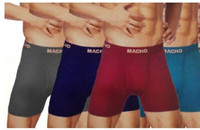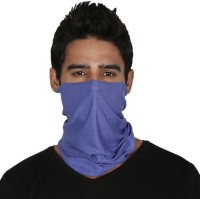Embroidered Sarees vs Sequinned Sarees: Which One Works Better And When
The saree is timeless, yet its many avatars often leave one standing in front of a mirror, wondering: embroidered or sequinned? 10 things to consider when choosing between embroidered sarees and sequinned sarees.
Sequinned Or Embroidered Sarees? A Complete Guide To Picking The Right Style.
Few things in a wardrobe hold as much cultural gravity as a saree. It's more than fabric; it's poetry in six yards, draped in countless styles, worn for countless reasons. But within this single garment exists a world of choices. Among them, two styles have stood the test of time while also dancing with modern trends, the embroidered saree and the sequinned saree.
One whispers elegance with detailed threadwork, the other shouts glamour with shimmering sequins. While embroidered sarees are often the go-to choice for weddings and family functions, sequinned ones tend to steal the spotlight at cocktail parties and receptions. Yet, the lines blur. Designers are mixing both, celebrities are styling them differently, and women today often ask: Embroidered sarees or sequinned sarees, which one is the better choice for me, and when?
The answer is not simple. It depends on occasion, personality, comfort, and even budget. Let's break it down.

Here's all that you need to consider when choosing between embroidered and sequinned sarees.
Photo Credit: Pexels
When To Choose What: The Key Comparisons
1. The Timeless Appeal of Embroidered Sarees
Embroidery on sarees feels like a whisper of heritage. From delicate zari to bold resham, each stitch tells a story. Think of a grandmother's trunk, lined with sarees where borders are adorned with peacocks, paisleys or temple designs. These sarees carry more than threads, they carry memory.
The beauty lies in their versatility. A lightly embroidered cotton saree is perfect for a festive puja, while a heavily embroidered silk piece shines at a wedding mandap. The detailing, whether it's kantha from Bengal or chikankari from Lucknow, adds character. Unlike sequins, which demand attention, embroidery lures the eye slowly, leaving a lasting impression rather than a fleeting sparkle.
It's the kind of choice for those who love subtle drama, enough to stand out, but never loud enough to overpower. And when preserved carefully, these sarees often outlive fashion trends, becoming heirlooms passed from one generation to the next.
2. The Dazzle Factor of Sequinned Sarees
If embroidered sarees are poetry, sequinned sarees are fireworks. There's no denying the thrill of stepping into a hall with lights bouncing off a sequinned drape. They catch every flash, every camera angle, every eye. Perfect for evening events, they give the wearer an instant aura of glamour.
Picture a sangeet night or a cocktail party: music pumping, disco balls spinning. That's where a sequinned saree finds its true home. Designers often pair them with modern blouses, halter necks, off-shoulder cuts, making them more contemporary than traditional embroidery-heavy sarees.
But sequins come with their quirks. They can be tricky to carry for long hours, especially if the work is dense. They may scratch or feel slightly heavy, and if the sequins aren't stitched well, they can fall off, leaving behind patches of awkward emptiness. Still, for someone who loves attention and wants to glow like a star, sequins always deliver.
3. Occasion Matters: Day vs Night
Choosing between embroidery and sequins often comes down to the time of day. Day functions, with their natural light, demand subtlety. Embroidered sarees, especially in pastel tones with fine threadwork, look graceful without being overwhelming. They let the sun highlight the details without blinding anyone.
Night events, on the other hand, thrive on sparkle. Sequinned sarees come alive under artificial lights, creating that glamorous effect the wearer desires. Imagine a reception at a grand hotel, chandeliers, fairy lights, cameras clicking. A sequinned saree doesn't just fit in; it thrives.
That said, blending is possible. For an evening family dinner, a saree with both light embroidery and a hint of sequins works wonders, elegant yet festive. The trick is to balance. Too much embroidery at night can get lost in dim lights; too many sequins during the day can feel overpowering.

Always consider the occasion when deciding between embroidered and sequinned sarees
Photo Credit: Pexels
4. Comfort and Practicality
Let's be honest, sarees are beautiful, but they demand commitment. Embroidered sarees are generally more comfortable to wear for long durations. The fabric breathes better, the weight is distributed evenly, and there's less chance of itchy discomfort. Think of attending a day-long wedding ceremony, comfort matters as much as appearance.
Sequinned sarees, by contrast, can feel heavier, especially if fully embellished. Sitting for long hours might feel tricky, and moving around can make the sequins rub against skin. Not to mention, folding and storing them requires care, since sequins can snag easily.
That said, newer designs now use lighter fabrics like georgette or chiffon with minimal sequin detailing, giving the sparkle without the weight. Practicality, after all, matters when events stretch late into the night.
5. Budget Considerations
The cost factor often tips the balance. Embroidered sarees cover a wide price spectrum. Simple machine-embroidered ones may start around ₹2,000, while intricate hand-embroidered silks can easily cross ₹50,000 or more. The detailing and craftsmanship directly influence price.
Sequinned sarees, too, vary, but mass-produced machine-sewn designs tend to be relatively affordable. A good sequinned saree for a party may range from ₹3,000–₹15,000. However, designer versions, especially those worn by celebrities on the red carpet, can go well into lakhs.
Here's where personal preference plays a role. For an investment piece that can be worn across generations, embroidery often justifies a higher spend. Sequinned sarees, while stunning, are trend-driven and may feel dated faster, making budget-conscious buyers think twice about splurging.
Also Read: Why Tie And Dye Sarees Are A Great Choice Among Gen Z
6. Personality and Style Statement
Clothes are an extension of personality. Someone with a quiet, refined style often gravitates towards embroidery, understated, dignified, deeply rooted in tradition. On the other hand, those with a bold, experimental streak lean towards sequins, loving the drama and sparkle.
Picture two friends at a wedding: one wearing a pale pink chikankari saree, looking effortlessly graceful, the other rocking a midnight-blue sequinned drape, shimmering under the lights. Both look stunning, but in different ways. Neither is “better” universally; it's about what resonates with the wearer's spirit.
It also depends on the mood. A woman who usually prefers embroidery might surprise herself with sequins for her own anniversary party. Sometimes, stepping out of one's usual comfort zone adds excitement to dressing up.

Choose a saree that reflects your personality and style; Photo Credit: Pexels
7. Durability and Maintenance
Here's the unglamorous side of sarees, upkeep. Embroidered sarees, especially those with threadwork, require dry cleaning but are generally more durable. With careful folding and storage, they last decades, often looking better as they age.
Sequinned sarees are trickier. Sequins may fall off, leaving behind gaps that are noticeable. Repairs can be painstaking, especially if the design is intricate. Cleaning requires utmost care, since harsh handling can dull the shine or loosen the embellishments.
For anyone investing in a saree for long-term use, embroidery is usually the safer bet. Sequins, though, serve best as occasion-specific showstoppers, to be brought out for glamorous nights rather than frequent wears.
8. Blending Tradition with Modern Trends
Today's designers are playful, refusing to stick to one style. Sarees often combine both embroidery and sequins, subtle threadwork forming motifs, with sequins adding a gentle sparkle. This fusion appeals to modern sensibilities: rooted in tradition, yet fresh and contemporary.
Celebrities on runways and movie promotions often flaunt these hybrids. A soft pastel georgette saree with embroidered floral motifs, lightly dusted with sequins, looks elegant at both day functions and evening parties. It's no wonder these mixed styles are becoming popular for bridesmaids or younger guests at weddings.
For those who struggle to choose between embroidery and sequins, this blend offers the best of both worlds.
9. Influence of Season and Weather
Climate plays a sneaky role in saree choices. In sultry summer weddings, lighter embroidered sarees in cotton or chiffon feel breathable and manageable. Sequins in the heat can feel sticky and uncomfortable, especially when dancing or moving around.
Winter weddings flip the script. Sequinned sarees in darker shades like maroon, navy, or black feel season-appropriate, while heavy embroidered silks also provide warmth. Monsoons are the real challenge, embroidery holds up better than sequins, which risk rustling and snagging in humidity.
So yes, even the weather can decide whether embroidery or sequins will shine brighter on a given day.

Think about the weather when deciding between embroidered and sequinned sarees
Photo Credit: Pexels
10. Emotional Connect and Long-Term Value
Clothes carry emotions, and sarees even more so. An embroidered saree is often tied to milestones, a mother's wedding saree, a grandmother's treasured piece, a gift passed down. These sarees carry sentimental weight, making them priceless beyond money.
Sequinned sarees, in contrast, are more about moments. The thrill of wearing one to a college farewell, the fun of a first cocktail night, the glamour of a best friend's sangeet. They become markers of celebrations rather than heirlooms.
Both have value, but in different ways. Embroidery represents continuity, sequins represent the present. Choosing between them often comes down to whether one wants to build legacy or live in the sparkle of now.
Products Related To This Article
1. Anouk Embellished Floral Sequinned Organza Saree
2. Anouk Embellished Sequinned Tissue Saree
3. Kasee Embroidered Saree
4. Saree mall Embellished Beads and Stones Silk Blend Sarees
5. Jinal & Jinal Zari Floral Sequinned With Unstitched Blouse Piece Muga Saree
6. HERE&NOW Women Embellished Embroidered Net Saree
7. VRAGI Embroidered Border Sequinned Pure Chiffon Saree
So, embroidered sarees or sequinned sarees, which one works better and when? The truth is, neither steals the crown outright. Embroidered sarees hold timeless charm, rooted in tradition, with comfort and durability on their side. Sequinned sarees bring glamour, fun, and the thrill of attention, perfect for nights where one wants to shine.
The answer lies in balance. For occasions that demand grace and longevity, embroidery wins. For parties that thrive on sparkle, sequins rule. And for those who refuse to choose, fusion styles offer the best of both.
At the end of the day, a saree is not just chosen for an event, it's chosen for the way it makes the wearer feel. Whether that's like a regal queen draped in threads of history or a shining star lighting up a dance floor, the saree always works its magic. You can also explore sarees for women online.
Disclaimer: The images used in this article are for illustration purpose only. They may not be an exact representation of the products, categories and brands listed in this article.













